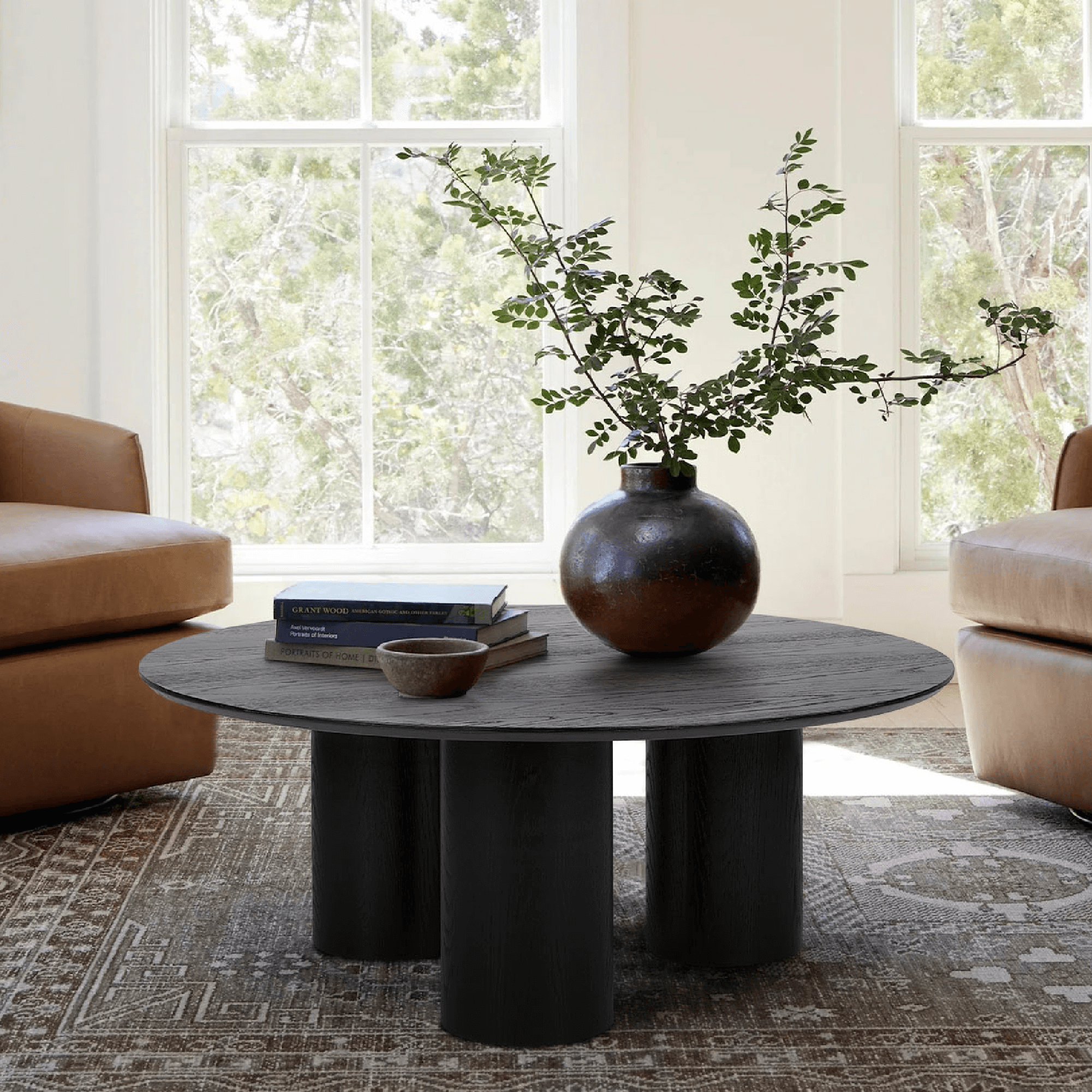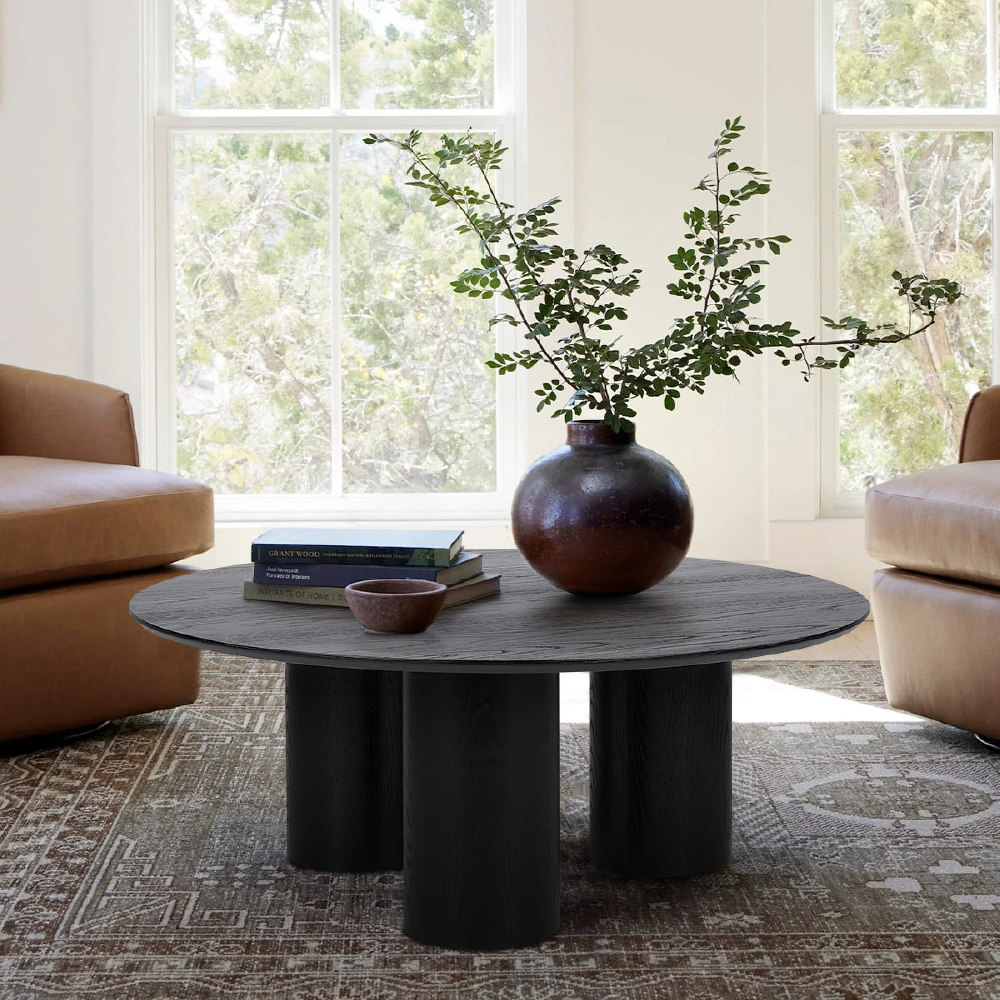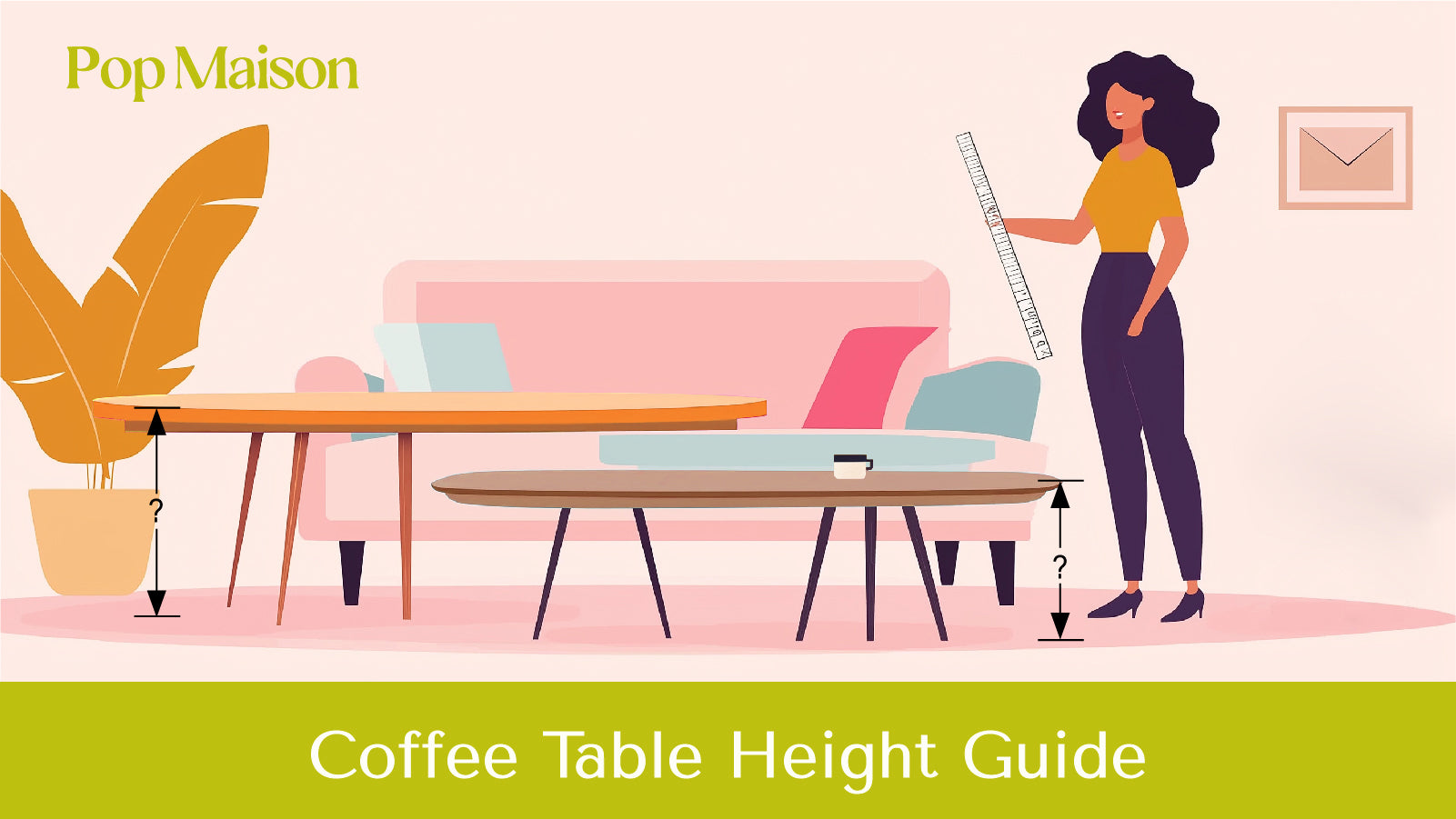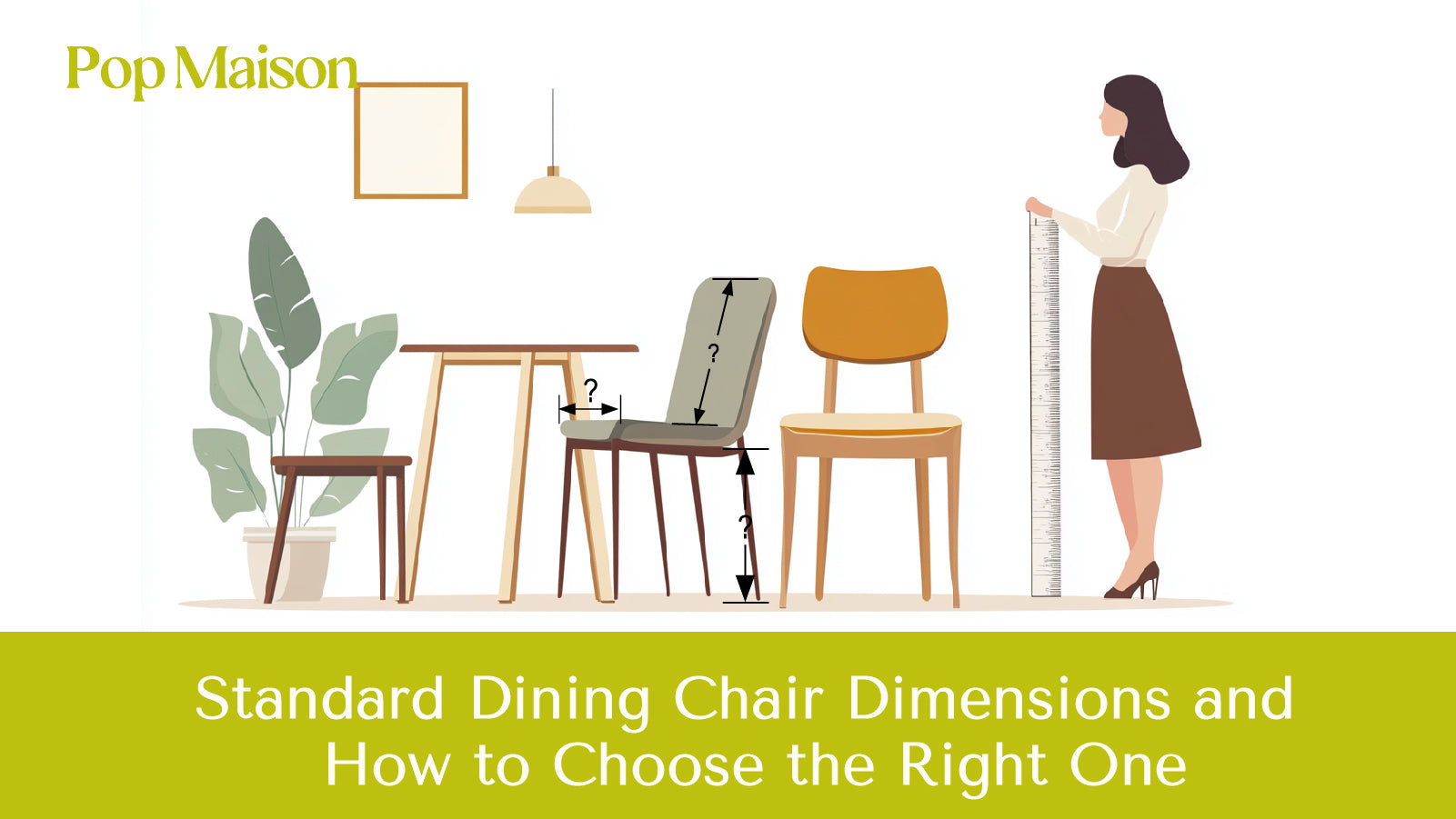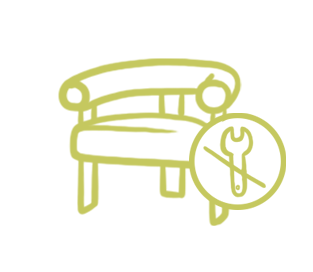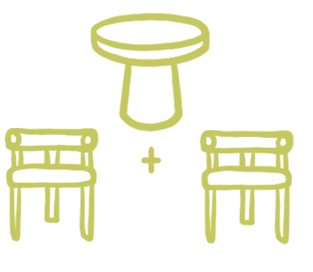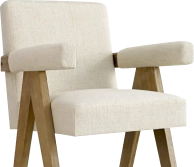Coffee table size includes its length, width and height. Coffee table lengths range from 24 inches to 60 inches for all shapes, and the length should be 1/2 to 2/3 the length of the sofa, with exactly 2/3 being ideal.
Square coffee tables are usually 24 to 48 inches long, while round coffee tables are 24 to 48 inches in diameter. The width of coffee tables ranges from 12 to 48 inches, with 18 to 30 inches being the most common. Coffee table heights range from 10 to 24 inches. This page mainly discusses the dimensions of the tabletop – its length (long side) and width (short side), which is sometimes referred to as its depth.
Read on to learn more about coffee table sizes for common table shapes. The pros and cons of the size of each shape are considered along with tips for selecting the right coffee table size and for avoiding common mistakes in the process. These tips will allow you to make an informed decision when selecting the best coffee table size.
How Long are Coffee Tables?
Coffee table length ranges from 24 inches to 60 inches, which is the same as saying coffee tables are 2 feet to 5 feet long.
Shape impacts coffee table length too. Rectangular coffee tables are 24 inches to 60 inches long. Square coffee tables range from 24 inches to 48 inches in length and width. Round coffee tables are 24 inches to 48 inches in diameter, and oval coffee tables are typically 36 inches to 60 inches long.
|
Rectangular Coffee Tables |
Lengths |
|
Short or Compact |
24 to 35 inches long |
|
Standard or Average |
36 to 48 inches long |
|
Long |
49 to 60 inches long |
Tip: Extra-long coffee tables, those longer than 60 inches, are available, but they are difficult to find or must be custom ordered.
Shape also affects the length of a coffee table. This chart shows coffee table length by table shape.
|
Type |
Lengths |
|
Rectangular |
24 to 60 inches long |
|
Oval |
24 to 60 inches long |
|
Square |
24 to 48 inches long |
|
Round |
24 to 48 inches across |
Understanding Coffee Table Dimensions
Understanding coffee table dimensions will prevent confusion.
-
Length: This is the longest side of the coffee table. The term “width” is used on some sites and by a few manufacturers to describe the longest side of the table. However, the industry standard is “length.” If it is a round coffee table, then length is the same as diameter – the distance across the table through its center.
-
Depth: This is the measurement of the shorter side of the coffee table. You’ll also see the term “width” used for this dimension, hence the confusion. For a round coffee table, the length, width and depth are the same.
-
Diameter: Measurement across the center of a round table.
|
Dimension |
What it Means |
|
Length |
Measurement of the long side |
|
Width or Depth |
Measurement of the short side |
|
Diameter |
Measurement across a round table's center (also length or width) |
Tip: When looking at coffee table information, check the total dimensions in the Weights & Dimensions section or similar. Many will show a diagram that includes all table dimensions.
How Long Should a Coffee Table Be?
The length of a coffee table should be one-half to two-thirds the length of the couch that it will sit in front of – or 1/2 to 2/3 the sofa or couch length. For example, if the sofa is 84 inches long, the coffee table should be at least 42 inches long (1/2 of 84) and not more than 56 inches long (2/3 of 84).
If the sofa is a sectional, then the table should be 1/2 to 2/3 the length of its longest section.
A coffee table of the right length provides a visual that is balanced and gives a sense of proportionality. Longer coffee tables overwhelm the space and stick out, making them an obstacle or trip hazard.
A table that is less than 1/2 the length of the couch doesn’t provide table space for some of the seating areas of the couch.
How Wide are Coffee Tables?
Coffee tables are 12 inches to 48 inches wide. This measurement is also called coffee table depth. It refers to the measurement of the short side of a coffee table. The measurement across a square or round coffee table can be called its width or its depth.
The most common width range for coffee tables is 18 to 30 inches, also called standard width or standard depth.
This chart shows coffee table width in narrow, standard and wide ranges.
|
Rectangular Coffee Tables |
Width (Depth) |
|
Narrow |
12 to 17 inches deep |
|
Standard or Average |
18 to 30 inches deep |
|
Wide |
31 to 48 inches deep |
Always check the Weights & Dimensions information to find accurate measurements for the length and depth or width of the table, so that you understand its true dimensions. A diagram is commonly presented showing length, width (or depth) and height. For example, a coffee table 48 inches long, 28 inches wide and 16 inches high may be presented as 48”L x 28”W x 16”H. The measurements can be in different order, such as 16”H x 48”L x 28”W.
Note: Coffee tables with widths greater than 48” may be available, but they are not common.
|
Type |
Widths/Depths |
|
Rectangular |
12 to 30 inches wide |
|
Oval |
24 to 36 inches wide |
|
Square |
24 to 48 inches wide |
|
Round |
24 to 48 inches wide |
How Tall are Coffee Tables?
Standard coffee table height ranges from 14 inches to 18 inches tall. This height is a good fit for most sofas, couches and sectionals because their average seat height ranges from 17-19 inches. And the top of the coffee table should be 1-2 inches lower than the seat height.
Low-profile are 10 inches to less than 14 inches in height, a good choice when sitting on the ground at the table is common. Taller coffee tables 19-24 inches aren’t common but are used when seating is higher and when accessibility needs require a higher tabletop.
What Shape Do Coffee Tables Come In?
Coffee table shapes that are most common are rectangular, square, round and oval or oblong. Less common shapes of coffee tables are 5-sided, 6-sided and 8-sided tables. Additionally, you’ll find coffee tables with real or faux wood slab or stone slab tops in a range of unique organic shapes.
Here are the most common shapes and their pros and cons.
-
Rectangular coffee tables are popular because they complement most living room layouts. They are best suited for use with long sofas and sectionals. However, keep in mind that the coffee table should not be more than 2/3 the length of the sofa.
-
Square coffee tables are ideal for compact spaces where, for example, a short sofa sits on one side with armchairs on other sides. Square tables give balance and symmetry to the furniture arrangement. Remember that the length of the table should be at least 1/2 the length of the sofa. To work with a long sofa, a square table must be quite wide too, taking up a lot of floor space.
-
Round coffee tables deliver a softer, more inclusive look. A single round coffee table works well in tight spaces; multiple round tables can be used in a larger living room with multiple seating groups. A round coffee table has no edges, so it is safer for small children. However, the table might need to be very wide to give you the length you need to work with a long couch.
-
Oval or oblong coffee tables are a good fit in living rooms that are fairly long but not very wide. Their length allows them to be used from more seats, and their rounded edges make it easier to maneuver around them. The rounded ends mean the table has less surface area than a rectangular table of the same length.
|
Type |
Pros |
Cons |
|
Rectangular |
Ideal for long sofas, most room arrangements |
Bulky in small spaces, sharp corners |
|
Square |
Great for pairing with armchairs & short sofas |
Not a good fit with long sofas |
|
Round |
Best in small groupings, intimate settings |
Large round tables don't fit small spaces |
|
Oval |
Long with rounded edges, good fit for long sofas |
Less surface area at the ends than rectangular tables |
What are Nesting Coffee Tables?
Nesting coffee tables are sets of 2 or 3 tables in different sizes. The smaller table or tables nestle under the larger table. This design allows them to be stored out of the way when not in use but remain within easy reach when needed.
What are Lift-top Coffee Tables?
Lift coffee tables are tables with a top that can be raised using hinges or similar mechanism. This provides two benefits. The top can be locked at a greater height for dining or use as a game, craft or work area. Secondly, most lift-top coffee tables have a storage area beneath the top. The items you place in storage are out of sight when the tabletop is in the down position.
What Factors Determine the Right Coffee Table Size for Your Needs?
The right coffee table size meets these criteria.
-
The table length is balanced with the sofa length. The proper balance is the table length being 1/2 the sofa length minimum with 2/3 the sofa length being just right. As a result, rectangular and oval/oblong coffee tables work best with long sofas. Square and round coffee tables are good fits for pairing with armchairs and loveseats.
-
The width of the table, given the size of the room, should allow 14-18 inches between the table and the sofa or other seating and 30 inches minimum between the table and a wall or other furniture. This allows for foot room and for traffic flow around the table.
-
Its height should be 1-2 inches lower than the sofa it is paired with. If you plan to mostly sit on the floor to use the table, then a shorter table 10-14 inches high will be more comfortable to use.
What Are Common Mistakes to Avoid When Selecting Coffee Table Size?
You can avoid choosing the wrong coffee table if you know these common mistakes.
The first common mistake is failing to measure the length of your sofa. You have to know its length in order to choose a coffee table that is 1/2 to 2/3 its length.
A coffee table that is too small for the location is one that is less than 1/2 as long as the sofa. This will make it difficult to reach for people at the ends of the sofa. On the other hand, a coffee table that is more than 2/3 the sofa length might stick out and lead to bumps or trips.
It is also a mistake not to measure the room, so that you can be sure to choose a table length and width that allows the proper spacing. The right amount of space between the table and seating is 12 to 18 inches. And there should be at least 30 inches between the table and a wall or other furniture such as a bookcase.
Remember to measure the height of the sofa seat. Then you can choose a table height 1-2 inches lower. One that is too low is hard to reach from the sofa; one that is too high is difficult to reach when seated on the floor.







